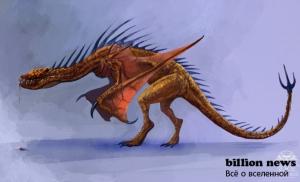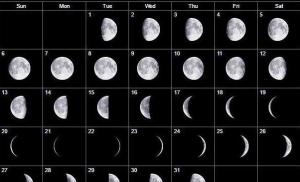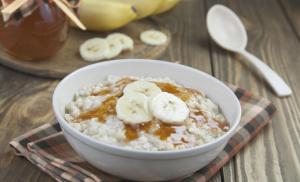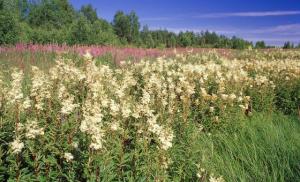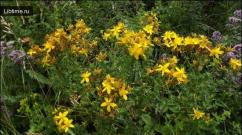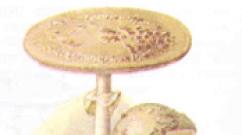Types of bananas. In which countries do bananas grow, how do they reproduce and what is their life cycle in nature? The path from the tropics to our table
A seller in a banana row at the bazaar asked me: “What are the different names of bananas in your country?” I thought about it and answered: “In Russia they are simply called bananas. No one here distinguishes them by variety.” The seller laughed. His neighbors in the banana row also smiled cheerfully.
Historically, all 500 varieties of bananas grown are a hybrid of three species: the acuminate banana, the Balbis banana and the Maclay banana. Some varieties now grow only in Australia or, for example, in the Caribbean islands. But even when we came to a small city bazaar in Ooty to buy “just bananas,” we were surprised. We decided to buy bananas of different varieties and demonstrate, and at the same time see for ourselves that bananas are not “just bananas.” Especially in India, the country that ranks first in the world in terms of banana cultivation.
In the photo from left to right:
1. Green banana is a separate variety, not unripe bananas. The fruits are large and inedible raw. Banana chips are made from them here. You can also boil them, etc. It is sold not in fruit shops, but in vegetable shops, along with cabbage and potatoes.
2. Nendrum - also called Kerala here. Large, pointed, yellow. The pulp is orange, dense, almost crispy, with a hard core. Sweet, aromatic, with a slight sourness - very tasty! Costs 40 rupees (30 rubles) per kilogram (7-8 pieces). Unlike other varieties, for some reason this one is sold in kilograms and not in pieces. Locals love this variety and believe it has health benefits. Although I doubt that other varieties are not useful.
3. Red banana. Large, thick. The skin is very thin and comes off along with the top layer of pulp. The pulp is yellow, very soft, sweet, aromatic. Costs 5 rupees (3 rubles) per piece.
4. Poovan. Medium size, thick, light yellow-greenish color, flesh dense, light yellow, the most sour taste compared to the others, aromatic, tasty. Costs 2 rupees per piece, smaller ones - 1.5 rupees. Very common in India.
5. Robusta moris. Strongly curved, thin. The skin is yellow. The pulp is light yellow, soft, sweet: nothing special - this is a Moscow banana. Like the Puvan, it is found here on every corner. The price is the same.
6. Honey banana. The skin is orange, thin, and is removed with the top layer of pulp. The pulp is light orange, tender, aromatic. It is tasty, almost like red, but with a little sourness. They cost as much as large bananas per piece, and are correspondingly more expensive per unit of weight.
7. Mysore rastali (mysore rastali). The smallest of all, spiky, ripe yellow-orange. The outside is yellow and looks like a honey banana or small puwan. The inside is white, tender, without sourness.
In the second and third photos, peeled bananas are in the same order, starting with the second - nendrum (the first green “vegetable” is not shown). Of course, in honor of the photo shoot, we tested bananas and tried to describe their taste. In general, all bananas taste like bananas. This is expected: after all, they are different hybrids of three closely related plants. But some of them taste more interesting, and some are simpler (like “Moscow” Robusta) - even bananas that look similar in appearance differ in taste, so there is no doubt that they are really different varieties.


For ease of transportation, bananas are cut green on the plantation and loaded directly with branches into trucks, much like cabbage on collective farms in Russia. Bananas ripen already at the market before being sold. There are special banana sheds for this purpose.
Hundreds of kilograms of powans will sing under the matting 
In a nearby shed, a banana cutter uses a sickle to cut bunches of Kerala bananas from their stems while his colleague arranges them in a neat stack. 
And this is what a number of sellers look like. Isn't it an attractive place? In front there are only brought branches of green nendrums, to the right of the calendar at the top - they are ripe. On the nearest counter there is robusta, on the next one there are puwans. 
Until recently, bananas were an exotic wonder for us, but now the shelves of all supermarkets are full of them. Everyone really likes this tasty and healthy delicacy and, importantly, it cannot cause any allergic reaction. The fruit is brought to us from other countries, and there has long been an opinion that for the most part it is a fodder banana, which residents of overseas countries would not eat. Is this really true?
Delicious fruit
In our country, bananas are eaten not only fresh, they are often boiled, baked and even fried. There are recipes with a wide variety of variations, which use both bright yellow ripe fruits and still very green ones. Chips are made from them, and in Asian countries they make honey and even contain a special substance that is unique in its properties - serotonin, thanks to which their consumption leads to an increase in mood.

Quality standard
Until 2001, our country was often supplied with feed bananas that did not meet general consumer standards. Now, thanks to the presence of the standard, the quality of all imported fruits has improved significantly. Today's GOST specifies three classes of this product - second, first and extra. They can be determined by the number of pieces in a common cluster, the diameter of the fruit and its length.
- The second grade must be at least fourteen centimeters.
- First grade - 19 cm.
- Extra - no less than twenty centimeters.
You can now go shopping armed with a ruler or pay attention to the box, where the manufacturer must indicate the minimum length of the fruit, its age and plantation code.

Types of varieties
Around the world today, up to four hundred different banana varieties are known, which are divided into textile (for paper production), decorative and edible. Many people believe that high-quality fruits bypass our country, and we are supplied only with feed bananas. In fact, those fruits that are used for food are divided into vegetable, dessert and table fruits. We eat mostly table bananas of the Cavendish, lady's fingers, and baby varieties. They are more miniature, distinguished by their tender flesh and wonderful sweet taste.

Vegetable bananas
There is another category of bananas - table bananas; children's dishes and desserts are often prepared from them and are called “plantains”. Such fodder bananas (photo below) are also eaten, but they are coarser and tougher, and have coarse and low-sweet pulp. It is preferable to boil or fry such fruits; they are much larger, meatier, and there are even “plantains” with red skin.
Dessert banana is usually consumed fresh; it is rich in vitamins and minerals, but for wide sale, the manufacturer most often purchases fodder bananas.
How to distinguish
The manufacturer usually marks the vegetable types of bananas on the box with a special designation - plantain. In addition, their main differences are their size and clearly defined longitudinal edges. Which bananas are considered fodder? These are almost straight, long and large fruits, the diameter of which is at least four centimeters.

They are picked from the trees not yet ripe and delivered to us in this form, since this variety of bananas does not turn yellow when ripened, but immediately begins to turn black. Due to their high starch content, plantains are high in calories. It is quite difficult to confuse these varieties when purchasing. The market is filled with yellow bananas, which no one buys for future use.

Basic rules
Finding out which bananas are forage is easy. There are a number of differences that clearly indicate their direct origin. These are the ones you should pay attention to when purchasing these fruits.
- Our market is rich in two varietal groups of “pantains” - “horned” and “French”. Both are distinguished by their low price and green, unripe appearance.
- To the touch, they are comparatively much stronger than table varieties, have rough ribbing and hard skin.
- These types of flesh are tart and fresh. At room temperature they quickly turn black and completely lose their taste.

The benefits of plantain
The main value of vegetable bananas is phosphorus, which is contained here in large quantities. These varieties are classified as dietary and are recommended for consumption due to the presence of vitamins A, B, E, and C in them. Fodder banana is rich in sulfur, chlorine, zinc, manganese, potassium and calcium. It is indicated for use by people suffering from cardiovascular pathologies, all types of arthritis and arthrosis, nervous disorders and having problems with the gastrointestinal tract. They help strengthen the overall immune system, eliminate weakness, improve mood, and have expectorant and diuretic properties.
It is from this variety of bananas that especially tasty and nutritious hot dishes are obtained. They have a mild taste that goes well with other, brighter ingredients. In a number of countries, wines, beer, cereals, muesli, chips, banana flour and even drinks that replace coffee are made from plantains.
The energy value of such a nutritious fruit is 90 kcal per hundred grams of product, but in the process heat treatment they significantly reduce the amount of sugar and calories. That is why nutritionists recommend including plantains in the weekly diet for people with diabetes or overweight. It is recommended to cook bananas like vegetables, combining them with herbs and aromatic spices. This is a wonderful side dish for any meat or fish.
Who among us has not eaten bananas? This fruit is very popular all over the world due to its wonderful taste. It is consumed both fresh and as part of various dishes and salads. At the same time, the demand for bananas is growing every year, as is their production. However, have you ever wondered how bananas grow, in which countries they are produced most? What do bananas grow on? And in general, what are they, these gifts of nature?
Answers to these questions and many more interesting and useful information are given below.
It has long been a stereotype among ordinary people that bananas grow on palm trees and in the wild. But this is not entirely true.
It may seem strange, but scientific point In terms of perspective, banana is a perennial herbaceous plant, and its fruits are multi-seeded and thick-skinned berries.
The question immediately arises - where are these seeds? The thing is that they are found in wild fruits that are oval in shape and require peeling. And those that are sold on supermarket shelves are the product of the work of breeders, created by them cultural form of this berry. In total, there are more than 40 species and 500 varieties of bananas (Latin name - Musa).
The most common cultivated banana varieties are:
- Lady finger;
- Gros Michel;
- Dwarf Cavendish;
- Giant Cavendish;
- Lakatan;
- Valerie;
- Robusta;
- Mysore.
Edible varieties are divided into 2 large groups. The first is bananas, which have sweet fruits for eating raw. The second category includes plantains, which produce starchy fruits for subsequent culinary processing.

Bush with green bananas
The banana has a structure characteristic of herbaceous plants, namely: powerful roots and a stem with leaves, from 6 to 20 pieces. It is the second tallest grass in the world (after bamboo).
Do they grow on trees or not?
What tree do bananas grow on? Good question. After all, if you look from the outside, it seems like a banana tree. However, as already mentioned, the plant itself is herbaceous, that is, it is not a tree, although it grows up to 8 m (higher than many trees). The diameter of the stem reaches 40 cm.
Banana leaves can reach a length of up to 3 m and a width of 50 cm, and they do not grow on branches, but directly from the trunk. This ratio of stem and leaf sizes is typical specifically for herbs, but not for trees.
Banana leaves grow from a short tuberous stem (found underground) to form a visible or false stem.
The root system of the plant deepens by 1.5 m, while spreading 4.5-5 m to the sides, like most grasses. The leaves are layered on top of each other; a feature of their structure is a large longitudinal vein running through the center. The color of the leaves depends on the variety; they can be completely green, have dark burgundy spots, or be two-colored: green on top and crimson underneath.
Bananas grow in clusters, their number can reach up to 100 pieces. The greatest productivity is observed at high humidity, although this can lead to the development of fungal diseases. The presence of sunlight is also very important.
Life cycle in nature
 The life cycle of a banana is typical for herbaceous plants - development of a false stem, flowering, fruiting and dying of leaves.
The life cycle of a banana is typical for herbaceous plants - development of a false stem, flowering, fruiting and dying of leaves.
After the first shoots appear (during seed propagation), rapid development begins. In nature, bananas grow very quickly - in just 9-10 months, their false stems reach a height of 8 m. At this age, the reproductive period (phase) in the life of the plant begins. Characteristic sign At this stage, the formation and growth of new leaves ceases.
Instead, a flowering stem begins to develop inside the false trunk. After 2-3 weeks, a large kidney-shaped inflorescence is formed purple. Under its base are bananas, which in the future will become fruits. The largest flowers are female, they are at the top. A little lower are the bisexual flowers, and at the very bottom are the male flowers, they are the smallest.
Pollination of female flowers is carried out by:
- sunbirds;
- tupai (small animals similar to squirrels);
- insects (butterflies, bees, wasps);
- bats (at night).
The latter are attracted by the specific smell of the inflorescences. As it develops, a cluster of fruits is formed, resembling a hand with many fingers. After ripening, they are literally attacked by the same animals and birds, thanks to which pollination occurred.
When fruiting is completed, the false stem dies, after which a new one begins to grow.
How do they reproduce?
 There are 2 ways how bananas reproduce:
There are 2 ways how bananas reproduce:
- using seeds;
- vegetative method.
Vegetative propagation is a faster and more reliable method than seed propagation. Biologically, the process is as follows: after the plant bears fruit, its above-ground part dies off, and the root grows to the side, creating new bushes.
Bananas are propagated by suckers and parts of the rhizome (rhizome). The most tenacious and productive offspring are formed during the fruiting of the mother plant; during this period they have the maximum reserve nutrients. As for planting rhizomes, it is best to use pieces weighing from 1.5 to 2 kg of whole rhizomes dug up from old plantations
Planting is best done at the beginning of the rainy season.
In nature, bananas reproduce using seeds located inside the fruit. At the same time, the wild banana fruit itself is inedible. It can contain from 50 to 100 seeds, sometimes their number reaches 200. Seeds germinate after falling into the ground (for example, when a ripe fruit falls). This takes time, because they are covered with a thick peel. After about 2 months, a green shoot will appear and the plant will begin to develop.
Cultivated varieties are propagated only by vegetative methods and with human help. The reason for this is complete absence seeds in the edible banana fruit.
Due to vegetative propagation, cultivated banana varieties do not renew their gene pool, as a result of which they have little resistance to fungal diseases.
Soils with a high humus content and good drainage are best suited for plantation cultivation. If the drainage is poor, then the risk of infection by the same fungi increases many times over. To maintain high yields, it is advisable to use potassium and nitrogen fertilizers.
In what countries do they grow?
 Banana is one of the oldest plants cultivated by man. As Russian scientist Nikolai Ivanovich Vavilov established during his many years of research, its homeland is Southeast Asia and the Malay Archipelago. In this section we will look at where the banana grows and in which countries it is produced most.
Banana is one of the oldest plants cultivated by man. As Russian scientist Nikolai Ivanovich Vavilov established during his many years of research, its homeland is Southeast Asia and the Malay Archipelago. In this section we will look at where the banana grows and in which countries it is produced most.
In what countries do bananas grow? Nowadays they are grown in at least 107 countries in Asia, Latin America and Africa, which has a humid and tropical climate. It is used as:
- food product (fresh and in form);
- base for making banana beer and wine;
- raw materials for fiber production;
- ornamental plant.
Of course, the main purpose of banana fruits is. The leader in the consumption of these fruits per capita is the small African country of Burundi - here each citizen eats almost 190 kg per year. It is followed by Samoa (85 kg), Comoros (almost 79 kg) and Ecuador (73.8 kg). It is clear that in these countries this crop is one of the staple foods. For comparison: on average, each Russian consumes just over 7 kg of bananas annually.
Banana crop ranks 4th in the world among cultivated plants, after rice, wheat and corn. This is not least due to its high calorie content - 91 kcal per 100 g of product, which is higher than, for example, potatoes (83 kcal per 100 g). The only drawback is how long it takes for a banana to grow. After all, before flowering begins, you need to wait 8 or more months until the plant itself ripens.
The export of bananas, which became possible with the advent of refrigeration units at the beginning of the 20th century, over time turned into a highly profitable business and remains so in our time.
The list of leaders in banana production for 2013 (in millions of tons) looks like this:
- India (24.9).
- China (10.9).
- Philippines (9.3).
- Ecuador (7).
- Brazil (6.9).
Banana products are imported mainly from European countries, the USA and Canada. The leader in this direction, the United States, purchases almost $2.5 billion worth of bananas every year.
Here you should answer the common question “Do bananas grow in Africa?” As noted, they are native to tropical and humid countries, so yes. However, there are not as many of them here as in Asian and Latin American countries - the leader on the African continent is Tanzania, which produced 2.5 million tons in 2013.
Useful video
Bananas in Russia have long ceased to be exotic, but not many people still know where and how these fruits grow. Meanwhile, bananas are not only sweet fruits, but also useful stems and beautiful decorative flowers:
Conclusion
Above we looked at how bananas grow and where, as well as some features of their structure and development. Let's summarize the main results:
- Banana is not only a tasty fruit, but also an interesting plant. It is herbaceous, although the size of this “grass” misleads people, giving rise to the myth that bananas grow on trees.
- Cultivated varieties can only be propagated with the help of humans, but they have wonderful taste characteristics and are devoid of seeds inside the fruits
- The importance of banana culture for humanity is difficult to overestimate: in many countries, banana is traditionally one of the main food products, as well as the main export product. Therefore, states where bananas grow are constantly increasing production volumes. This means that the importance of this culture will only increase in the future.

What types of bananas are there? Varieties and varieties of bananas.
The store shelves in our country cannot boast of a wide variety of banana varieties, but there are a great many of them. Banana varieties have various forms and size, taste and nutritional characteristics are very different. Some of the world's most common banana varieties are described here.

Baby banana or finger banana(baby/nino/lady finger) unique in its size, very sweet with a pronounced aroma. When ripe, it reaches 7.5 cm in length, acquires a bright yellow color and a creamy texture of the pulp. This variety is usually used in fruit salads, for baking, or as a snack. Finger bananas are grown in tropical countries South America, Caribbean, Africa. Kids are much more expensive than their more common counterparts, but they also surpass them in gastronomic qualities.

Java blue banana is a small, thick banana that is usually used as a dessert or snack. It has a bluish-green peel, and the flesh is endowed with a sweet, creamy taste; it is also called blue ice cream banana.

Banana Barro(Burro) has a square-shaped fruit. When ripe, the skin becomes yellow with black spots, and the flesh becomes creamy white. Barrot has a bright, lemon-like aroma. This variety of banana can be eaten fresh, or used in any recipe, as well as for making banana chips.

(Cavendish) is the most common banana variety, the length of its fruit varies from 15 to 25 cm. The peel is bright yellow with green areas. When overripe, the skin becomes black and the flesh becomes soft. The banana is at its peak of ripeness when the entire skin is yellow with a few dark brown spots. This type of banana is used everywhere. More Cavendish bananas are eaten around the world than any other type of tropical fruit.

Banana Manzano(Manzano), has short plump fruits, with a mild strawberry-apple aroma. The ripeness of Manzano is indicated by the completely blackened skin, only then the banana is filled with its inherent taste. This banana variety is grown in South America, Mexico, the Caribbean, Asia and Africa. It is also known as apple banana.

Banana Plantain(Plantain), contains more starch than other types of bananas and less sugar. It must be cooked before serving as it is not suitable for consumption raw. This banana variety is native to India and gravitates to tropical climates. Plantain often replaces potatoes in the kitchen in the Caribbean and Mexico, usually used fried or stewed. When ripe, the thick peel of a banana changes its color from green to brownish-black; the flesh is light pink. When fully ripe, the starch is partially converted into sugar, which makes this variety of banana also suitable for making desserts.

The red banana is much nicer and sweeter than the yellow variety. When ripe, red bananas have a dark burgundy or even purple color, with pinkish flesh. Red banana has a raspberry-like aroma. It contains more beta-carotene and vitamin C than a regular yellow banana. This variety is most often used in baking. Red bananas are also called Jamaican bananas. Bananas are very unusual herbaceous plants, here you will find
